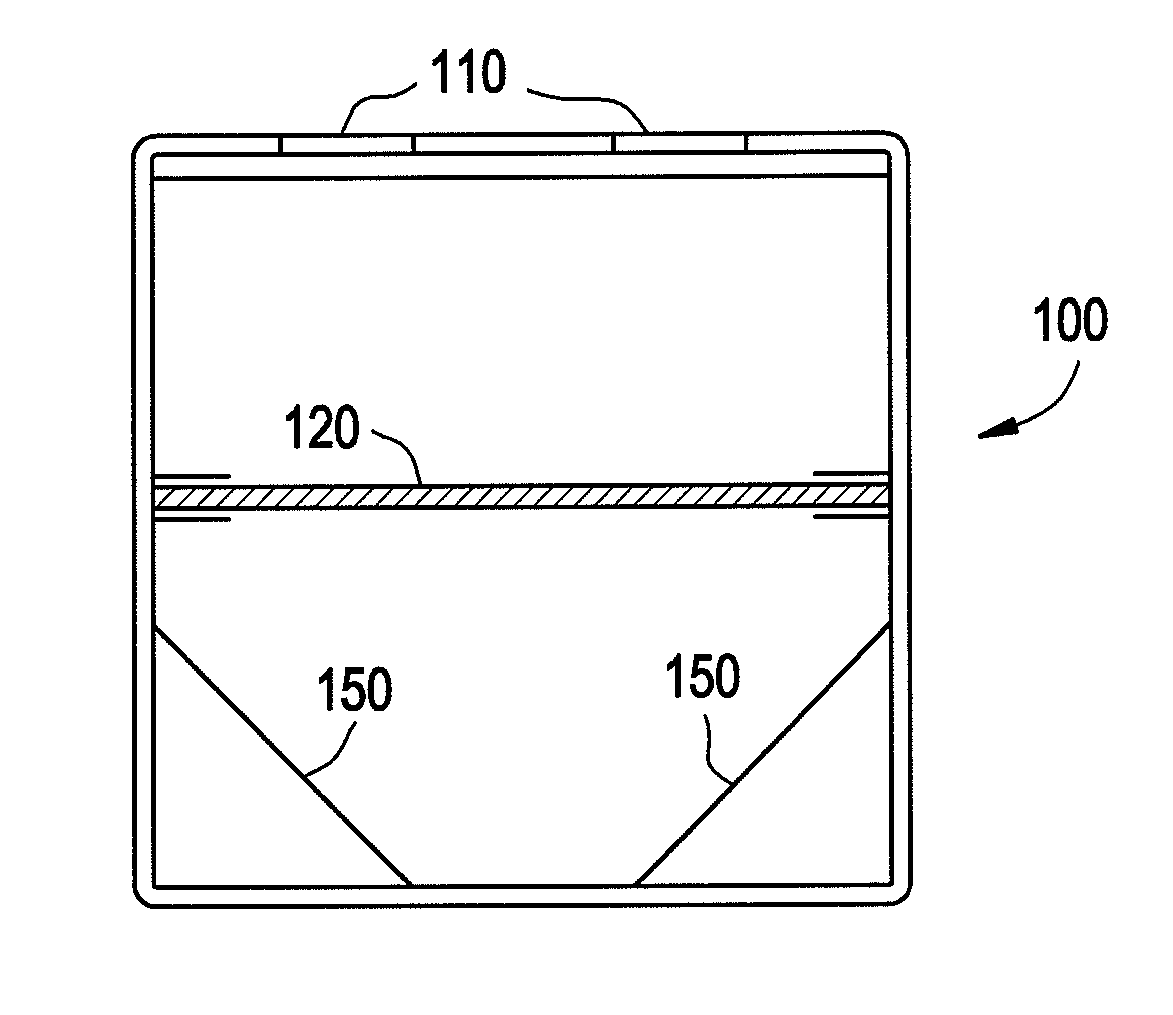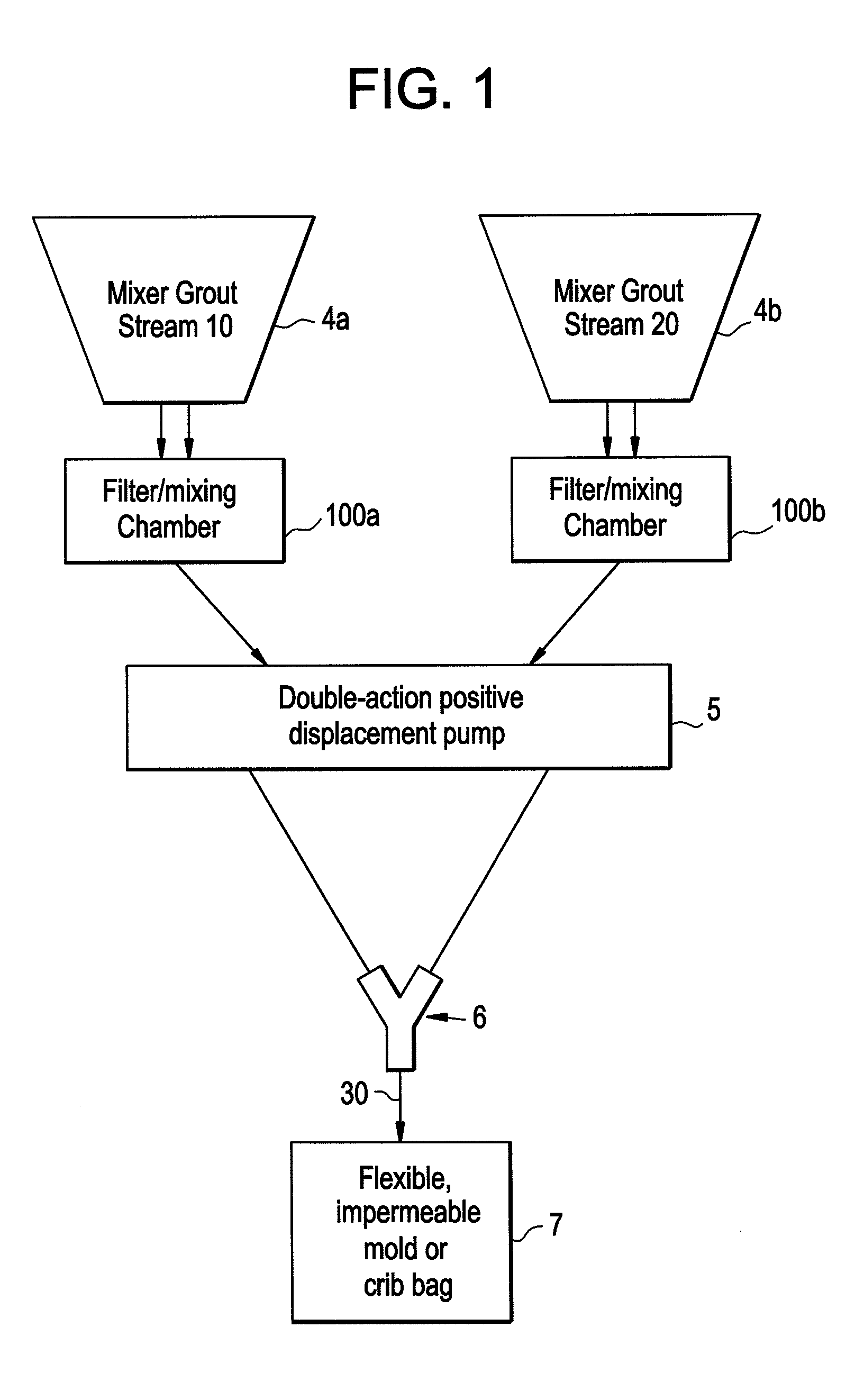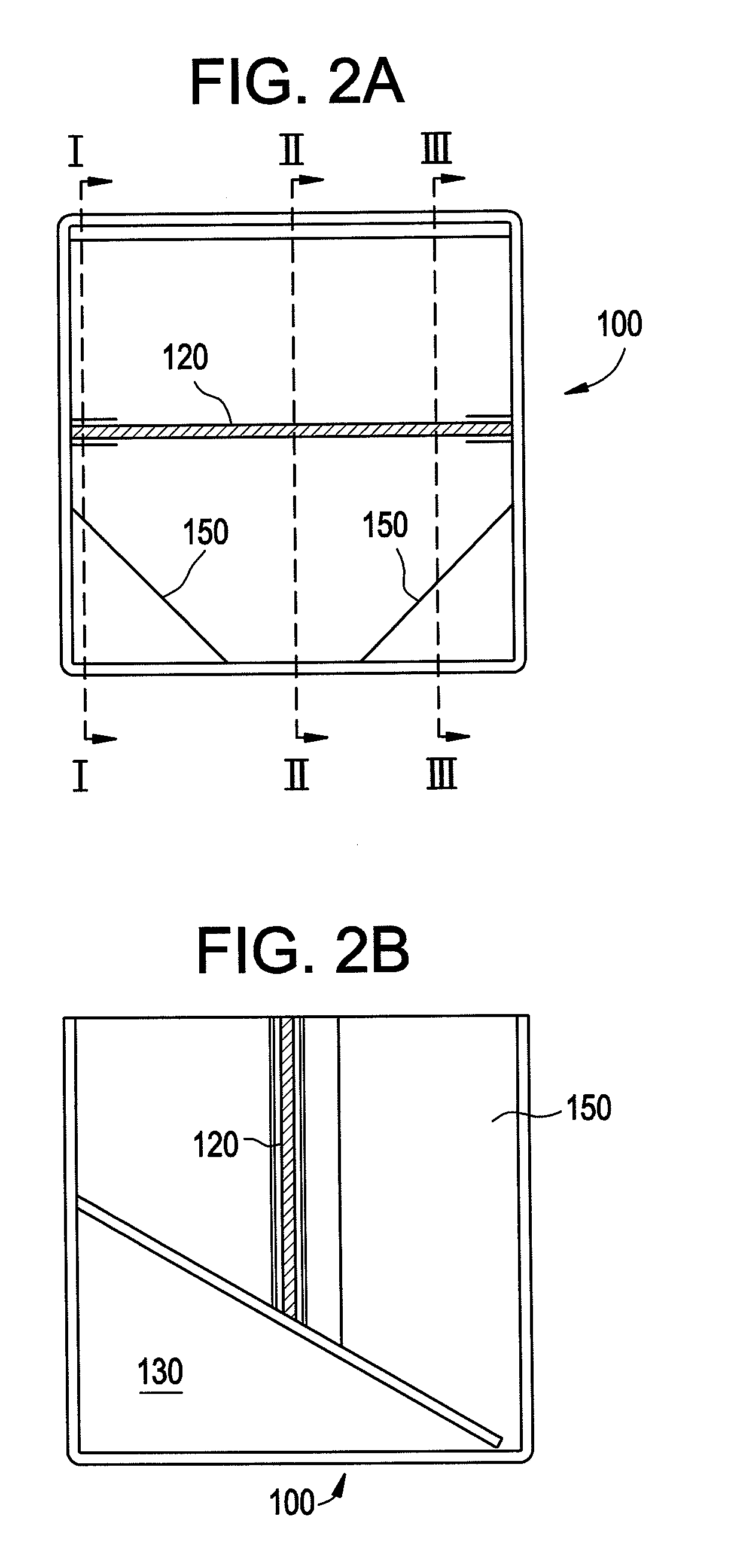pumpable cementitious grout system for use in the production of underground roof-support systems and other load-bearing structures
a technology of cementitious grout and support system, which is applied in the direction of service pipe system, water main, solid waste management, etc., can solve the problems of high installation difficulty, considerable degree of underground manual handling (and its associated safety risks) in their installation, and the inability to meet the requirements of construction and maintenance, etc., to achieve the effect of reducing the cos
- Summary
- Abstract
- Description
- Claims
- Application Information
AI Technical Summary
Benefits of technology
Problems solved by technology
Method used
Image
Examples
example
Four water based grouts were prepared using the above method and used to fill two 6 feet by 30 inch diameter crib bags. The crib supports were stored for twenty-eight days and subsequently tested to assess their suitability for the purpose of underground roof support.
The in-duty requirements of roof support systems may be divided into three categories; a) stiffness, b) peak load capacity and c) residual loading capacity. In use, a support column is required to provide a high load bearing capacity combined with the ability to achieve that load with the minimum amount of compression of the support. The load bearing capacity must be such that it meets the requirements of the underground conditions particular to that installation and can be controlled to some extent by adjusting the diameter of the crib bags used to form the supports. As the day-to-day operation of the mine continues, the roof and floor of the mine tend to converge, increasing the load on the support. This results in th...
PUM
| Property | Measurement | Unit |
|---|---|---|
| Fraction | aaaaa | aaaaa |
| Fraction | aaaaa | aaaaa |
| Fraction | aaaaa | aaaaa |
Abstract
Description
Claims
Application Information
 Login to View More
Login to View More - R&D Engineer
- R&D Manager
- IP Professional
- Industry Leading Data Capabilities
- Powerful AI technology
- Patent DNA Extraction
Browse by: Latest US Patents, China's latest patents, Technical Efficacy Thesaurus, Application Domain, Technology Topic, Popular Technical Reports.
© 2024 PatSnap. All rights reserved.Legal|Privacy policy|Modern Slavery Act Transparency Statement|Sitemap|About US| Contact US: help@patsnap.com










